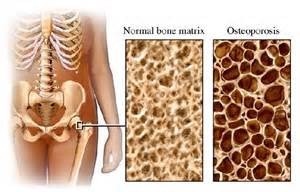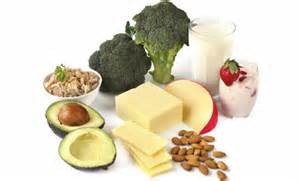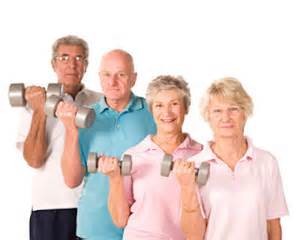 May is national osteoporosis month. According to the National Osteoporosis Foundation, over 54 million Americans over age 50 are affected by osteoporosis and low bone mass. This has led to over two million broken bones each year in the United States! Protecting our bones is a lifelong process. We need to build them while we are young, and preserve our bones as we age. This can be done through both diet and exercise.
May is national osteoporosis month. According to the National Osteoporosis Foundation, over 54 million Americans over age 50 are affected by osteoporosis and low bone mass. This has led to over two million broken bones each year in the United States! Protecting our bones is a lifelong process. We need to build them while we are young, and preserve our bones as we age. This can be done through both diet and exercise.
You probably know that vitamin D and calcium are the two major nutrients that help build bones. Ninety-nine percent of the calcium in our bodies is in our bones! Women 50 years of age and younger and men 70 years of age and younger need to ingest about 1,000 mg Calcium each day, while women over 50 years of age and men over 70 years of age need 1,200 mg Calcium each day. Check out this article on understanding osteoporosis for more information and other nutrients important for bone health.
Good sources of calcium include: 
- Dairy products: low fat milk, cheese, yogurt
- Canned sardines and salmon
- Leafy green vegetables: collard greens, turnip leaves, kale, okra, mustard greens, broccoli
- Fortified orange juice, cereals, soy milk
- Other sources of Calcium
Vitamin D aids with calcium absorption to help build strong bones. The best and most abundant source of vitamin D is sunlight. The body helps convert the ultraviolet ray of the sun into vitamin D in the body. Other sources include fatty fish, like salmon, and fortified foods. Read more about calcium and vitamin D sources over at the National Osteoporosis Foundation website.
It is always important to consume a healthy diet, abundant in a variety of foods, and limiting foods that may cause harm. Salty foods, for instance, can lead to bone loss by pulling calcium from the bones. Try to limit salt intake to 2,400 mg/day and avoid foods that contain more than 20% of your daily value of sodium. High intake of alcohol, caffeine, and soft drinks can also lead to calcium depletion. Moderation is key with these foods and beverages. If you are looking for something new, try these osteoporosis friendly recipes from top chefs.
 In conjunction with nutrition, exercise helps to build strong bones. Exercise can be in all forms, like weight training, running, walking, or Zumba. Check out Megan’s post on Zumba, a great workout for all levels. Running, walking, and other similar exercises should be completed about 30 minutes most days of the week. These can be supplemented with weight training exercises two to three days of the week, and balance exercises most days to help reduce the risk of falls. As always, please consult your primary care provider before beginning a new diet or exercise.
In conjunction with nutrition, exercise helps to build strong bones. Exercise can be in all forms, like weight training, running, walking, or Zumba. Check out Megan’s post on Zumba, a great workout for all levels. Running, walking, and other similar exercises should be completed about 30 minutes most days of the week. These can be supplemented with weight training exercises two to three days of the week, and balance exercises most days to help reduce the risk of falls. As always, please consult your primary care provider before beginning a new diet or exercise.
Whether you are 5 or 75 years of age, start building and protecting your bones today to reduce your risk of developing osteoporosis with strong bones!
by Margaret Merlie
Eat Fit Health Intern
Graduate Student, Drexel University
MS in Human Nutrition, 2015